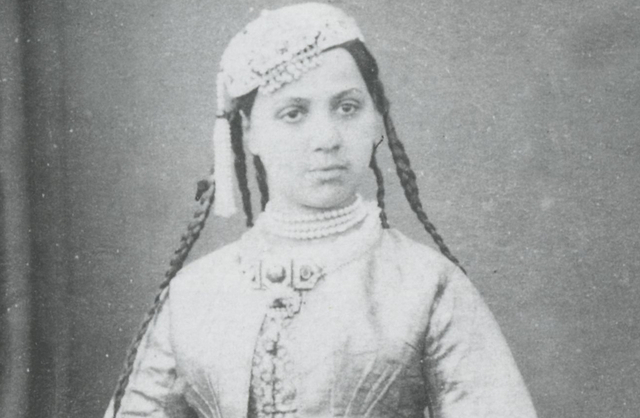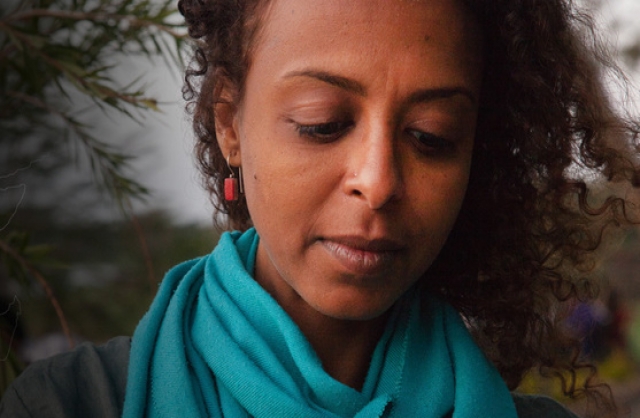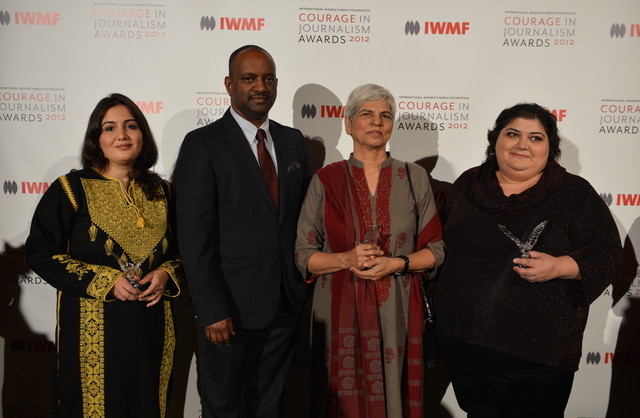 Bamba Muller, 1848-1887, the daughter of an Ethiopian and German banker, who became Maharani Bamba Duleep Singh when she married the last ruler of the Sikh Empire in northern India. (Photo courtesy of The Schomburg Center for Research in Black Culture)
Bamba Muller, 1848-1887, the daughter of an Ethiopian and German banker, who became Maharani Bamba Duleep Singh when she married the last ruler of the Sikh Empire in northern India. (Photo courtesy of The Schomburg Center for Research in Black Culture)
Tadias Magazine
Events News
Updated: Thursday, January 10, 2013
New York (TADIAS) – There is plenty of historical evidence that Ethiopian traders traveled to India as early as 2,000 years ago. The kingdom of Axum had established a very active commerce with India and Axumite gold coins minted between 320 and 333 AD had found their way to Mangalore in South India where they were discovered in the 20th century. Ivory, silver, gold, wine, olive oil, incense, wheat, rice, cotton cloth, silk, iron, copper, skins, salt, and sesame oil were some of the main items traded on both sides of the Indian Ocean and as far as China. Axum was also involved in the slave trade.
According to Dr. Sylviane Anna Diouf, an award-winning historian who studies the African Diaspora and the co-curator of an upcoming exhibition at New York Public Library’s Schomburg Center for Research in Black Culture entitled Africans in India: From Slaves to Generals and Rulers, there was another wave of Africans who arrived in India beginning in the 1100s both as free and enslaved people, among them Ethiopians.
“The most celebrated of the Ethiopian leaders was Malik Ambar (1548-1626). Born in Kambata, southwestern Ethiopia, he was enslaved as a young man and taken to Mocha in Yemen,” Dr. Sylviane said. “He was later sent to Arabia where he was educated in finance before being brought to Baghdad, Iraq. [Malik's birth name was Chapu] Converted to Islam, Chapu was renamed Ambar (ambergris in Arabic). He was sold and sent to India where he arrived in the early 1570s. He became a slave of Chengiz Khan (believed to have been an Ethiopian), the prime minister of the sultanate of Ahmadnagar.” She added: “Freed upon Chengiz Khan’s death in 1575, Ambar left Ahmadnagar to become a commander in Bijapur where he was granted the title Malik (the Great). In 1595, he went back to Ahmadnagar, putting himself and his army in the service of another Ethiopian, Abhang Khan. By the turn of the 17th century, Malik Ambar had an army of 10,000 African cavalry and infantrymen. In 1600, he gave his daughter in marriage to a 20-year old prince, installed him as sultan, and ruled in his place as regent and prime minister. Fateh Khan, Malik Ambar’s son, inherited his father’s position as prime minister. Fateh Khan married the daughter of another Ethiopian, Yaqut Khan, one of the most powerful nobles of Bijapur. In 1636, Fateh Khan poisoned Sultan Murtaza Nizam Shah III and installed the sultan’s son in his place. Fateh Khan held the real power until the Mughals conquered the sultanate.”
Dr. Sylviane, who is also the Curator of Digital Collections at The Schomburg Center and Director of The Schomburg-Mellon Humanities Institute, said trade between East Africa and India was boosted with the spread of Islam. Indian Muslims from Gujarat migrated to African trading towns in Kenya, Zanzibar and the Comoros Islands where they worked with African and Arab merchants. While African traders traveled to and from India, some settled.
One of the images included in the show depicts a painting of Bilal, known to be of Ethiopian origin, was among Prophet Muhammad’s earliest converts. “He became the first muezzin of Islam, the man who calls to prayer from the mosque minaret.”
The African men and women who were taken to India through the early slave trade were known there as Habshi and Sidi (Siddi, derived either from sayyidi, my lord in Arabic; or from saydi, meaning captive or prisoner of war). They came mostly from Ethiopia, Eritrea, Somalia, and adjoining areas. Muslim, Ethiopian Christian, and Indian traders preyed on people they all considered “pagans.” Those bought for the Muslim world were converted to Sunni Islam. Trained as soldiers they were highly prized for their military skills. It is among these men that the generals, commanders, and rulers emerged.
During his travels in India, from the 1330s to 1340s, Moroccan explorer Ibn Battuta had remarked that the Habshis of Gujarat “are the guarantors of safety on the Indian Ocean; let there be but one of them on a ship and it will be avoided by the Indian pirates and idolaters.”
Besides appearing in written documents, Africans in India have been immortalized in the rich paintings of different eras, states, and styles that form an important component of Indian culture, also leaving an impressive architectural legacy.
“The imposing forts, mosques, mausoleums, and other edifices they built — some more than 500 years ago — still grace the Indian landscape,” Dr. Sylviane said. “They left their mark in the religious realm too. The 14th century African Muslim Sufi saint Bava Gor and his sister, Mai Misra, have devotees of all origins. Muslims, Hindus, Christians, and Zoroastrians frequent their shrines.”
Politically speaking the “Abyssinian Party” as it was called dominated the Bijapur Sultanate starting in 1580 and conquered new territories until the Mughal invasion in 1686. The Africans were de facto rulers because sultans were frequently involved in mysticism and the arts, and often left the governing responsibilities to their vizier or chief ministers. Bijapur was thus governed, if not ruled, by nine successive African viziers.
In regards to commerce, in the 1300s Moroccan traveler Ibn Battuta met Ethiopian merchants in what are now India, Sri Lanka, and Malaysia. The most famous African trader was Bava Gor (Sidi Mubarak Nob). He came from East Africa during the 14th century and made Ratanpur in Gujarat his home. He became the patron saint of the agate bead industry and is credited with increasing the trade of quartz stone between East Africa, the Persian Gulf, and India.
The exhibition at the Schomburg Center that is also curated by Dr. Kenneth X. Robbins is scheduled to open early next month. It features 109 images displayed in 33 panels, including photographic reproductions of paintings which are held in different collections in Europe, India and the United States. They come from the Ashmolean Museum in Oxford, England, the British Library in London, the Chester Beatty Library in Dublin, Ireland, the Francesca Galloway in London, the Smithsonian Institution in Washington, D.C., the Los Angeles County Museum of Art, the Musée des Arts Asiatiques Guimet in Paris, the Museum of Fine Arts in Boston, the San Diego Museum of Art, as well as the Catherine and Ralph Benkaim Collection, The Kenneth and Joyce Robbins Collection, The Royal Collection at Buckingham Palace in London, and the Freer Gallery of Art.
Below are images from the show courtesy of the Schomburg Center.
—
If You Go:
Schomburg Center for Research in Black Culture
515 Malcolm X Boulevard
New York, NY 10037-1801
Click here to learn more at the exhibition website.
—
Related:
SELEDA: Ethiopian Art Exhibition in the Bay Area
—
Join the conversation on Twitter and Facebook.






























